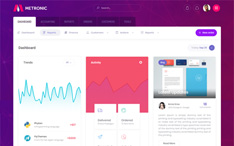
Another contribution from our readers, this time we’ll discuss how to improve email responses to your customers in your business or eCommerce website. Let’s begin right away!
The experience you give your customers must be simple and memorable to succeed in the increasingly competitive e-commerce landscape. But how fast is fast enough when you’re responding to customers and what’s the balance between delivering a speedy response that meets consumer expectation and a complete answer that’ll solve the problem?
To keep your customer metrics high, reduce churn and grow your cadre of lifetime value customers, let’s talk about balancing speed and completeness in customer email responses.
Speedy Expectations
As e-commerce continues to grow, we’re seeing a lot of parallels surrounding on-demand everything. From the present-day standard of two-day shipping to instant page loading and, of course, customer-response times, consumers won’t tolerate waiting, because company B is always waiting if company A can’t promptly satisfy a user’s need.
But how fast is respectable these days?
A 2017 Arise study, which surveyed 1,500 U.S consumers, found that over 80 percent of consumers expect a response within 24 hours. One (business) day sounds about right. However, an astounding 37 percent of respondents expect a response within an hour and 16 percent expect an immediate response!
These two stats undoubtedly foreshadow the future state of customer response expectations, which should make any company cringe a bit thinking how it will need to improve customer service operations to stay competitive and keep its customer base.
Admit it, this isn’t what you had in mind when you created an e-commerce site.
But companies can fight back with some protocol in place.
One way to cut down on annoyed customers is to use autoresponders. For many customers, as long as they know that a company received their ticket and the problem is being worked on, they’ll be satisfied.
Setting up response templates also comes in handy. Since many of the support tickets will be similar, reps can cut response times by re-using responses that contain all the needed answers.
But They Want No-Hassle Experiences
It’s not enough to respond quickly though, you still have to solve the customer’s problem. Companies driving customer service representatives to reply to every ticket, no matter how complex, as quickly as possible, are potentially shooting themselves in the foot. The odds of providing less-than-stellar customer service are too high.
Per a 2017 American Express Survey, one-third of Americans say they’ll switch companies after just one instance of a poor experience. For larger e-commerce companies getting thousands of support tickets a day and who are expected to comply with increasingly timely responses, there’s little margin for error.
So what does a company do when it receives a difficult ticket? The simple answer is to respond with an estimated resolution timeline.

However, companies need to ensure those tickets don’t fall through the cracks. Additionally, the more responses that occur between a customer and rep, the more likely that customer is to feel annoyed or frustrated by the experience.
To ensure no ticket is left behind, consider setting up time-based email alerts for your reps. Again, creating templates saves time but also safeguards any pertinent information from being left out while a rep quickly types up a response.
Finally, and most importantly, you want to have an organized pipeline for all incoming tickets. These tickets should be categorized based on their complexity, time needed to respond, and importance to both the business and customer.
Using these ticket details, create a matrix flow that efficiently moves support tickets along and neatly categorizes outstanding ones.
Massive Growth and Revenue Potential for Companies Who Can Walk the High Wire
Companies lose more than $62 billion annually due to poor customer service, according to research from NewVoiceMedia.
Not all of this is attributed to email, but since it’s a preferred channel (79 percent use email per the Arise study above) for a majority of online shoppers, the potential for increased revenue, lowered customer churn and increased lifetime value customers (LVCs) is there for companies capable of organizing customer resources effectively.
A key metric you can use to identify how you stand with potential LVCs is by including a net promoter score (NPS) survey question in emails to your customers a few times per year.
NPS allows you to segment customers between promoters, passives, and detractors, giving you a sense of which customers are likely to churn, those who are currently indifferent and which ones will champion your brand to those close to them.
Consider your revenue loss when just one customer churns. Studies estimate it costs anywhere from 5–25 times to acquire a new customer than it does to keep an existing one. Likewise, Bain & Company found increasing customer retention rates by just five percent raises profits anywhere from 25-95 percent.
There’s no exact science to balancing speed and completeness in customer email responses. But with a top-notch customer support staff, the right software and protocols in place, you can provide helpful experiences for your users and grow their overall satisfaction toward your brand.
Stay Updated
Subscribe to the Azmind Newsletter and I’ll update you as soon as I release a new WordPress Theme, Bootstrap Template, Tutorial or other Freebie:
To learn how we use your data when you sign up to our newsletter, read our Privacy Policy here.




